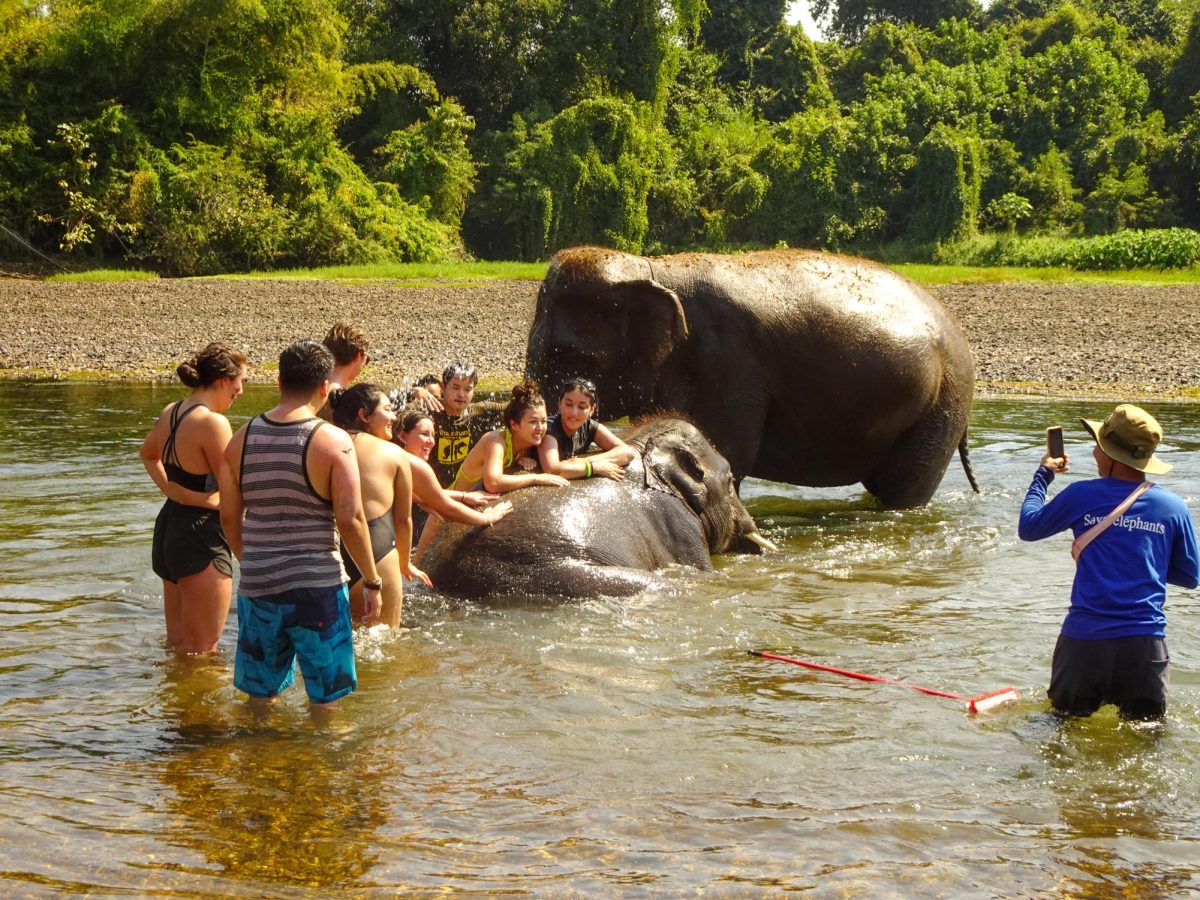 Hands are poised on the steering wheel, fingers tremble in anticipation and a foot hovers above the gas pedal ready to strike. The Suzuki GSX-R 600 engine rumbles hungrily like a rogue bull ready to be released into the ring. The unveiling of the AR-12 has finally arrived; the culmination of a year’s worth of planning, designing and
Hands are poised on the steering wheel, fingers tremble in anticipation and a foot hovers above the gas pedal ready to strike. The Suzuki GSX-R 600 engine rumbles hungrily like a rogue bull ready to be released into the ring. The unveiling of the AR-12 has finally arrived; the culmination of a year’s worth of planning, designing and
manufacturing.

In the CAM Center behind the engineering building on San Diego State’s campus lies a cramped yet cozy workshop full of machinery, car parts and ingenuity. This is where approximately 40 diligent members of Aztec Racing spend up to 40 hours a week— sometimes more—constructing an autocross car completely on their own time and entirely of their own will. They receive no college credit for participating and work with a less-than-perfect budget.
“It’s definitely the hardest club to be in,” electrical engineering senior Travis Snyder said.
Conducted through the Society of Automotive Engineers, the team is open to all majors with one simple requirement: a general interest in cars, whether it’s building them or marketing the team itself. Putting it simply, former vice president and mechanical engineering senior Ruben De Alva said, “If you are willing to work, we have a spot for you.”
According to current president and mechanical engineering senior Abraham Buenrostro, the general concept of the team is to design and build a car from scratch with the intent of entering in an international competition to ultimately market and sell the product. Taking place June 19-22 in Lincoln, Neb., this contest brings together 80 schools from across the world with participants hailing from Brazil, Canada, India, Japan, Mexico and Puerto Rico. To qualify, teams must be registered as a Formula SAE team and create a vehicle they can present as a testament to their dedication and expertise. Following a technical inspection, the car is put through vigorous tests for acceleration, autocross, skidpad and endurance that evaluate how well the car handles.
“It’s basically like competing against every other engineer (to see) who’s the better engineer,” Buenrostro said.
The team is split into 10 separate units based on different aspects of the car, ranging from engine, brakes and suspension to business and marketing. Each unit is then headed by a “lead,” who generally guides the team. The entire operation is overseen by the chief engineer, currently mechanical engineering senior Dan Chance, whose greatest accomplishment is seeing his contributions become a reality.
“It was a very good feeling to see the car that I was just involved in last year out on the track and doing well,” Chance said.
The new model, dubbed the AR-13 after the year in which it was built, is two months ahead of schedule in construction compared to last year, according to Sturckow. Having almost completed the chassis, or the general skeleton of the car, which is made of 4130 chromoly steel tubing, the next step is to focus on the suspension and then move into the electrical systems while the body of the vehicle is built simultaneously.
The young men and women of Aztec Racing depend largely on personal finances, fundraisers held at various restaurants in East Commons and sponsorships for funding. Their largest sponsors to date are race car driver Bill Freeman and most notably Mark McMillin of McMillin Realty and McMillin Racing, who recently endorsed the team with $10,000. Sturckow said this sizable donation is the first step of support they will be receiving.
“Next year he (McMillin) wants to put about $25,000 into the race shop, and he wants to revamp the whole race shop: paint the walls, redo the floors and get us new tools,” Sturckow said.
This kind of generosity is precisely what keeps the operation running, and the crew is always seeking new sponsors from any business willing to lend its support.
Besides getting the chance to build a car and work with other like-minded, passionate individuals, Aztec Racing offers engineering students acquired information and hands-on skills to apply to their future career. Former president and mechanical engineering senior Eric Zugner recognizes the need to gain certain knowledge in the field which cannot be learned in the classroom.
“For me, that’s one of the greatest benefits that we get personally out of the team,” Zugner said. “(It) allows us the opportunity to gain the experience in a friendly environment with other students and to be able to go into an interview saying, ‘Yes, I’ve got four years of hands-on experience.’”
De Alva agrees, saying, “A lot of companies and recruiters respect what we do just because they know how much work it is.”
Last year’s competition put Aztec Racing at 48th out of 80, but this year, the crew is looking to be a top 10 team.
“Our team has come a long way in two years,” Sturckow said proudly, radiating with excitement as he talked about his goals for this year’s race. While its achievements may have arisen from new sponsorship, elaborate equipment and an expanded knowledge base, it is the devotion of this group which makes it so successful, translating into both a tangible and intangible form of accomplishment.
“We learn a lot each year. And then the car gets better and better each year, and we place better and better each time,” Snyder said.
As the AR-12 sits on the track, emblazoned with the red and black of its alma mater and birth place, it is considered Aztec Racing’s most powerful car to date. With redesigned body work, student-fashioned throttle body and new suspension and electrical systems, it’s everything its creators had envisioned and more.
“I’ve driven a lot of sports cars and race cars—this one blows them all out of the water,” Sturckow said.
He sits in the driver’s seat, prepared to show the spectators, rival teams and judges of 2013 Formula SAE just exactly what his car is made of—literally. And, when signaled, that is just what he is going to do.
3 … 2 … 1 blast off!









